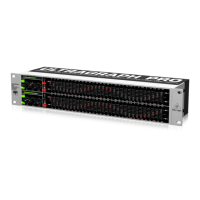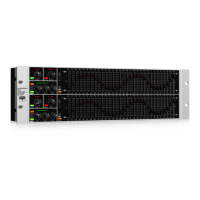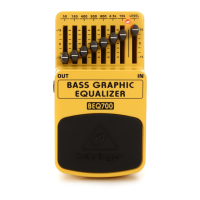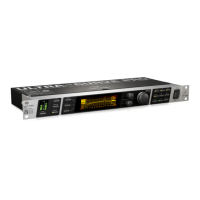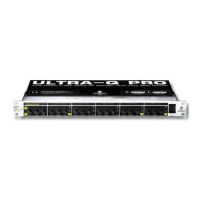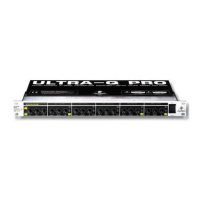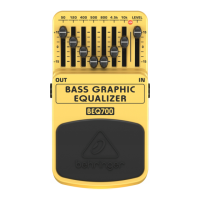Do you have a question about the Behringer FEEDBACK DESTROYER FBQ1000 and is the answer not in the manual?
Explains the design philosophy and component selection of the FEEDBACK DESTROYER.
Provides crucial instructions for unpacking, installation, and initial setup.
Explains audio feedback phenomena and common sources like FOH and monitor mixes.
Guides on setting appropriate audio levels for effective feedback elimination.
Details how to use the FBQ1000 to prevent feedback in monitor mixes.
Explains how to integrate the FBQ1000 for feedback suppression in FOH systems.
Describes the 'Off' mode where a filter is deactivated.
Explains how to manually adjust frequency, bandwidth, and gain for filters.
Covers Single-Shot and Auto modes for detecting and suppressing feedback.
Details how to load and select stored presets on the FBQ1000.
Explains how to change filter modes (OF, PA, AU, SI, LO) for individual filters.
Guides on manually adjusting frequency, bandwidth, and gain for filters.
Details the balanced and unbalanced audio connection types for the unit.
Explains the setup for connecting MIDI devices using DIN connectors.
Provides a detailed chart mapping display values to actual frequencies.
Explains the design philosophy and component selection of the FEEDBACK DESTROYER.
Provides crucial instructions for unpacking, installation, and initial setup.
Explains audio feedback phenomena and common sources like FOH and monitor mixes.
Guides on setting appropriate audio levels for effective feedback elimination.
Details how to use the FBQ1000 to prevent feedback in monitor mixes.
Explains how to integrate the FBQ1000 for feedback suppression in FOH systems.
Describes the 'Off' mode where a filter is deactivated.
Explains how to manually adjust frequency, bandwidth, and gain for filters.
Covers Single-Shot and Auto modes for detecting and suppressing feedback.
Details how to load and select stored presets on the FBQ1000.
Explains how to change filter modes (OF, PA, AU, SI, LO) for individual filters.
Guides on manually adjusting frequency, bandwidth, and gain for filters.
Details the balanced and unbalanced audio connection types for the unit.
Explains the setup for connecting MIDI devices using DIN connectors.
Provides a detailed chart mapping display values to actual frequencies.
| Brand | Behringer |
|---|---|
| Model | FEEDBACK DESTROYER FBQ1000 |
| Category | Stereo Equalizer |
| Language | English |
